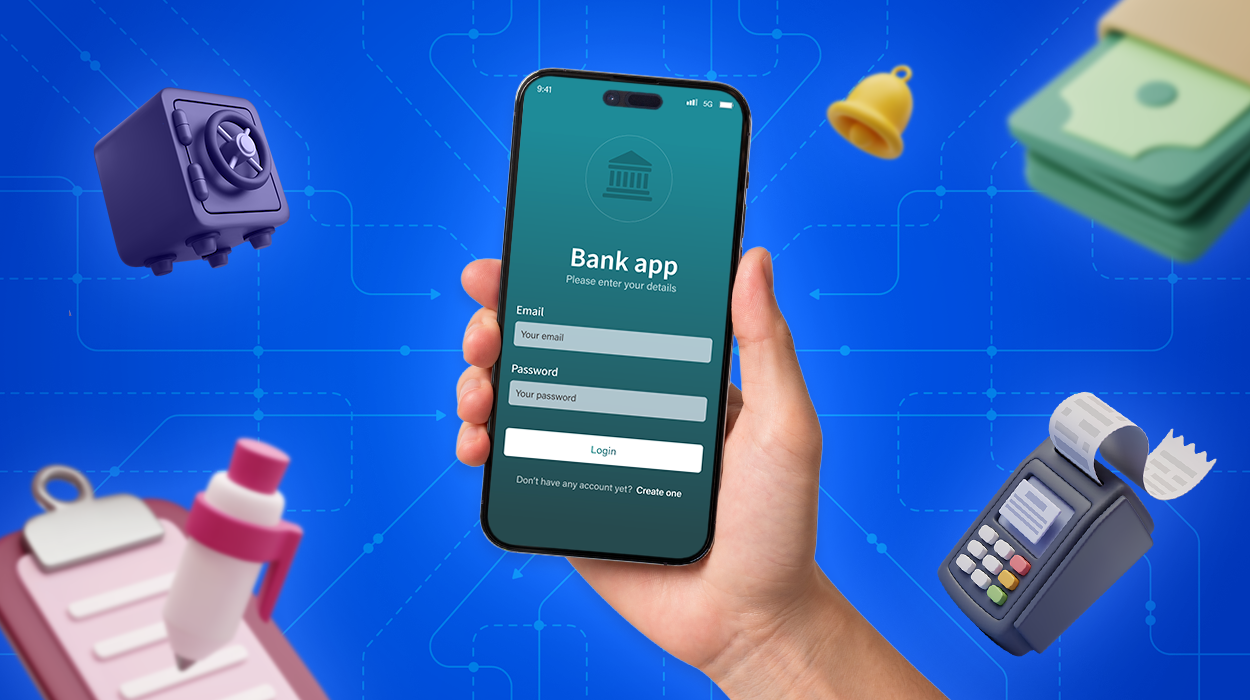Fintech and social media—it’s a tricky combo. You’re dealing with people’s hard-earned cash so, trust, security, and transparency must be integrated into everything you post. But here’s the good news: Fintech brands have found some clever ways to do just that while also making their content fun and engaging. The best part? You can do it too. Let’s dive into ten standout strategies that worked and how to use them for your own brand.
1. Interactive challenges: Step Bank
Remember Step Bank? They totally nailed it with their TikTok challenge targeting teens. Their “money-saving hacks” and “teen budget tips” challenges had users creating and sharing their own budgeting tips. These challenges encouraged users to share their tips, leading to a movement that Gen Zs love.
How you can do it:
Take something that sounds boring—like saving or budgeting—and turn it into a game. Create a challenge your audience will want to engage with, then sit back and watch them generate content for you. Keep it simple, make it fun, and let them take the spotlight. Bonus points if it goes viral!
@step @pricelesstay tips on how to build CREDIT as a teen! 💰 don’t sleep on this! 💤😵 #getstep #banking #credit #teens #creditscore ♬ original sound – Step
2. Educational content: Robinhood
Robinhood turned what most people find intimidating—stock trading—into something approachable and dare we say, easy? They used snappy, short videos on Instagram and YouTube to break down things like “How to Buy Your First Stock” in the simplest terms possible.
How you can do it:
Your audience might not have time for a 10-minute tutorial. Make it concise, visual, and to the point. Create a series of bite-sized explainers on the topics your customers find tricky. You have to make sure everyone feels like they can dive in without getting lost in the jargon.
ALSO READ: 7 TikTok Videos That Will Make You Say “YES” to E-Wallets
3. Industry collaboration: GCash x PayPal
GCash joined forces with PayPal to make money transfers a breeze for freelancers. In Rec•Create’s video, they showed users how to link their GCash accounts and withdraw right from PayPal without the usual transfer charges. If you’re a freelancer, that’s a dream come true—less hassle and no fees? Sign me up.
How you can do it:
Find a brand that complements what you do and collaborate. It’s like a superhero team-up but for fintech. Show your users how you’re making their lives easier by partnering up with a trusted name. Highlight messaging like speeding up their withdrawal processes, affordable cross-border payments, accurate currency exchanges, or easy access to international funds. Create content that walks them through exactly how it works.
4. Small business spotlights: Square
Square understands that their success is directly tied to the success of the small businesses they serve, so they decided to put these businesses front and center in their marketing efforts. From cafes to tarot readers, Square told their stories on social media with videos, interviews, and fun infographics.
How you can do it:
Create short videos, interviews, or even a quick Q&A that show how your tool is making their lives easier. Focus on businesses that your audience can relate to. And don’t just make it about your product—let the story focus on the business’s success and the role you played in it. Authenticity is key here, so make sure it’s real, relatable, and inspiring.
5. Influencer collaborations: Current x MrBeast
When Current teamed up with MrBeast for a $100,000 giveaway, things got wild. His massive fanbase jumped at the chance to win big, and in the process, they learned about Current’s banking features. In just a week, they racked up 500,000 new accounts. Totally not bad for a week’s work.
How you can do it:
Find an influencer who aligns with your brand and their audience will follow. Make the collaboration feel natural—don’t just push your product; tie it into something fun or rewarding for the influencer’s followers. Whether it’s a giveaway, challenge, or exclusive offer, make it exciting and proactive.
ALSO READ: 5 Successful Fintech Influencer Marketing Campaigns
6. User-generated content: Monzo
Monzo hit a home run with their #MonzoMoments campaign, where users shared how they hit their savings goals or budgeted for a dream vacation. Monzo engaged with customers on Twitter and Facebook, responding to comments and showcasing success stories.
How you can do it:
Give your users the spotlight. Invite them to share their own wins with your product, then engage with them in the comments or repost their stories. Not only are you building community, but you’re also getting free, authentic content that speaks volumes about your brand. Plus, people love showing off their wins.
Hey 👋 We've not had any issues from our side. If you can't see it available in the app then the payment most likely hasn't been set up with us yet. It's worth reaching out to the sender to check everything's gone through okay, or to reach out to us in the app so we can check.
— Monzo 🏦 (@monzo) November 14, 2024
7. Charitable campaigns: Maya
In the wake of Typhoon Ulysses, Maya stepped up with a donation drive, making it easy for users to contribute directly through their app. The seamless experience and meaningful cause got people sharing the campaign organically, boosting both engagement and good cause.
How you can do it:
Find a cause your audience cares about and make it super easy for them to get involved. Whether it’s a fundraiser or donation feature in your app, make sure the process is smooth and the cause is clear. People want to feel like they’re making a difference—and they’ll be more likely to share and engage if you help them do that with minimal effort.
8. Real-time giveaways: CashApp
Cash App’s #CashAppFriday became a social media sensation, giving away cash prizes to users who tweeted their $Cashtag. The campaign ran every Friday on Twitter, with winners receiving money instantly through the app. The simplicity of participating—just a tweet—kept users coming back week after week.
How you can do it:
Run a regular, real-time giveaway that’s simple and rewarding. The key here is consistency. If your audience knows that every Friday (or whenever) they have a shot at winning something, they’ll keep tuning in. It’s a great way to build engagement and create a weekly buzz around your brand.
#CashAppFriday starts now. Drop your $cashtag 💰 pic.twitter.com/0dxocgleGp
— Cash App (@CashApp) December 10, 2021
9. Groups and communities: Venmo
One of the most unique examples of community-driven fintech marketing comes from Venmo, which created Facebook groups centered around shared financial interests and peer-to-peer payments. The group became a place for users to discuss shared experiences, like fundraisers or group trips, and engage with one another about financial topics, such as splitting bills or managing expenses with friends.
How you can do it:
Create a space where your users can connect with each other. Whether it’s a Facebook group, a subreddit, or even a private community on your platform, give your users a place to discuss your product in a natural, helpful way.
10. Recruitment campaign: Revolut
Revolut took to Instagram Stories to give potential hires a sneak peek into life at the company. They shared behind-the-scenes looks at the team and highlighted the unique perks of working there, making it feel authentic and exciting.
How you can do it:
Give people a reason to want to work for you—show off your company culture! Use Instagram Stories or LinkedIn to give an insider’s look into what makes your workplace great. Whether it’s employee spotlights, office tours, or just candid moments, let your team’s personality shine through.
What’s next for your fintech brand?
Now that you’ve seen these campaigns in action, the question is: which one are you going to try first? From influencer collabs to real-time giveaways, there are endless ways to turn dry fintech topics into content your audience wants to engage with. So go ahead—get creative, have some fun with it, and start building those connections.
RELATED ARTICLES:
- Maya vs. GCash | Which has the BEST FinTech Video Campaigns in 2023?
- How to Build an Effective Fintech PR Strategy in 6 Steps
- What Makes These Fintech Video Campaigns So Successful?
M2.0 Communications is a Public Relations Agency that specializes in business, technology, and lifestyle communication. We offer a range of PR services including corporate communications, media relations, social media marketing, influencer marketing, and video production. Learn more about our work on our case studies page.



